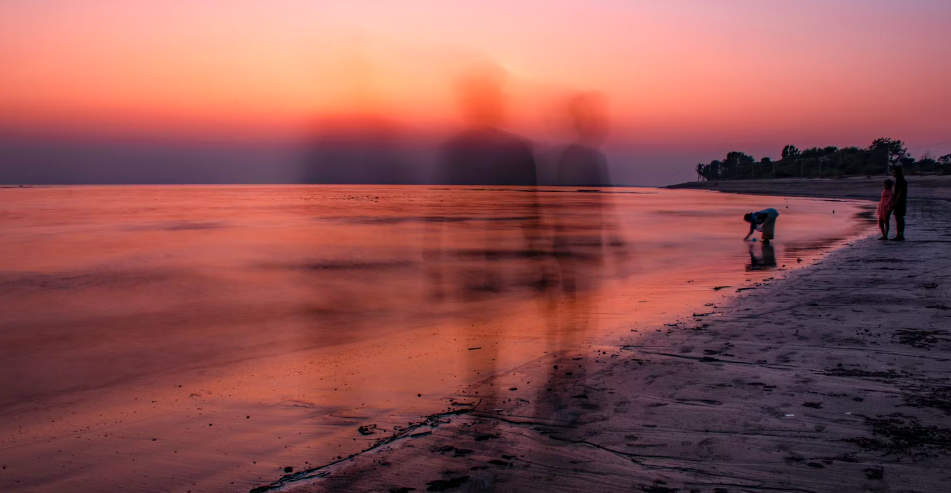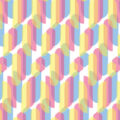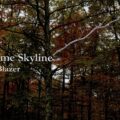“There are no whole stories, only fragments:” The Poetry of Gopal Lahiri

In a 2018 interview with The Wombell Rainbow, the Bengali poet Gopal Lahiri said, “Poetry is life. It is like a habit. It comes out seamlessly. I know I have to write. I believe it’s destiny.” Lahiri’s latest volume, Crossing the Shoreline (Haoajan, 2023, Kolkata), is a collection of poems that, true to its title, tries to cross several boundaries, both literal and metaphorical, as the poet writes compulsively and cathartically in his destined creative activity.
There is an aspirational momentum to this journey, which strains toward an ideal. This Romantic affiliation, flowing so fluidly in his verse, is captured beautifully in “Stories” which seeks to locate that movement within opposing extremes:
Between wreckage and resilience salvation lies somewhere between the two.
This ultimate goal is sometimes described as the “unseen shadow,” an invisible source drawing the speaker to it, “eager for my arrival,” as he confesses in “Love Alphabets.”
In the poem, “More Real,” the search intensifies, and acquires greater urgency: “You are here yet/ far beyond / Real and more real.” Then, in the poem “Crossing the Shoreline,” the quest turns inward:
The mineral landscape draws each undulation of my own breathing, every location is in walking distance. Go and receive the self.
Interestingly, this journey is, at times carried out in a reverse direction, as well, as in “Anchorage”: “We follow the shores / where the people and words / have lost their moorings.” Sometimes a trespasser, and sometimes a fugitive, the poet is the archetypal traveler in imagination’s diverse domains, breaching divisions and extending frontiers. In the course of his search, the poet encounters manifold experiences including struggle, pain and loss. In the poem “Start Again,” for instance, he defines the predicament of the lost in a heightened awareness of spiritual desolation:
Part of me lives inside: laughing, wailing, The lost are like this.
Lahiri’s poetry seems to be a continual process of excavation to dredge the true self or spirit out from underneath layers of trappings. In the poem “Freedom,” for instance, he warns,
Before the utterance remove the crust of the magic letters. Let release its subtle essence.
He tries to explain his exploratory leanings by attributing them to his innate curiosity, and the imperatives of his scientific calling. In a 2020 interview in Different Truths, Lahiri explains, “Being a geologist I really indulge in digging unexplored areas and bringing out something new which can be seamlessly integrated into my poetry, too. There is no conflict as such between my writings and geology.”
The world is, indeed, too much with the poet. Experiences, at times, seem to weigh him down. In the poem “Touch,” for instance, he refers to “the sense of glass in the body,” a laceration felt in the flesh even as in “Whirlpool” he mentions a “sense of trespass” as the addressee intrudes into his space. In the poem “Amnesia” a feeling of entrapment and foreboding is deftly sketched through lines such as the following: “dungeons once filled with skeletons invite evil lairs”.
Lahiri’s poems come alive with possibilities as they tremble into different states of being. “Poems are not really written; they just happen as a result of listening to the inside and the surroundings,” Lahiri said in the same interview given with Different Truths. His images, drawn for the most part, from the natural, elemental and cosmic world are luminous, transparent and finely wrought, and succeed in evoking the truth of scene and situation through their quiet epiphanies.
“It’s not easy to forget, to last it out and annihilate, there are no whole stories, only fragments,” says the speaker in the poem “Fragments,” in an intuitive understanding of the essentially broken narrative of life. Nature manifests itself through striking images of beauty and power. In “Far and Beyond,” for instance, “time (is) thrust in like / a cracked seed in its strangeness”. In “Fading Rainbow,” the lines, “The whisper of a fading rainbow splits the evening,” and “dreams are like mist that thins and disappears into the blue,” though conventional, drive home the poet’s closeness with his natural surroundings.
Lahiri puts nature at the core of his consciousness, acknowledging its centrality not only in his artistic life but also to his profession as a geologist.
A vast majority of the poems concern the craft of writing poetry, the genesis of that art or the uplifting action of the imagination. This naturally gives rise to a many-tongued articulation that speaks to readers at several levels, placing it firmly in the self-referential and self-reflexive tradition of metapoetry, at once, allusive and allegorical.
In “Soul Music,” this expression is “a primeval language / deaf like a stone, a downpour” which assumes “sinuous bends, loops, curves, turns,” before becoming “a simulacrum of soul music.” As the poet negotiates his surroundings through the metaphor of the poem, everything is apprehended aesthetically by him. “My Poem” is a perfect example of this tendency:
Every day, the words shuffle their feet, they waltz around the books and shelves…
He refers to “alphabets (that) wait like a patient” and “stanzas (that) get stuck” before concluding with a reference to the poem as it takes shape through “lines and half-lines.” In “Far and Beyond” nature is associated with the postures and predicaments of creativity:
The trees bend to one side, losing their songs in every leaf
Even “window sills scribble poetry behind the flower pots,” as is seen in “Transitory Moments.” In “One Mind Humming,” the anthropomorphic cast of Lahiri’s imagination is clearly seen:
Trees stretch their silhouettes, dabbling with darkness, and in the liquid light, the night bird searches metaphors.
In the haibun “Light and Shadow,” aspects of nature are, again, understood in aesthetic terms. “The lake is lined with basalt and the nearby fort wall is all echoes and metaphors.” Similarly, in “Open Window,” he writes, “the alphabet can speak in its own tongue. It will be all symbol surely; suffering each invisible star.” Significantly, it is the “salvage of rain” in “Whirlpool” which restores the balance and promises redemption.
Lahiri’s technical virtuosity is seen in the schematic division of the collection into four sections: Voices of Concision; 14 Liners; Haiku and Senryu; and Haibun. The first section shows the poet’s effortless ease in expressing profound observations through fleeting and evocative glimpses. The fourteen liners typically demonstrate his restless experimentation within the sonnet form as he compulsively plays with stanza lengths within the overall structure of fourteen lines.
The haikus and senryus, while maintaining the standard three lines, innovate over the distribution of syllables. These are ebullient verses, pithy and pointed in imagery and effect. They are bleaker in tone than the longer poems, expressing at times, a sense of wistfulness, and at others, a feeling of futility. Several of them explore loss, brokenness, conflict and migration among other themes. Take, for instance, the following poems:
my romance vanishes in the rear-view mirror sunset broken light knocking prison doors birds taking flight ready to migrate to a new war zone
The senryus, too, are nuanced snapshots of urban life with its accompanying predictability, ennui and tedium expressed through images of civic clairvoyance. The following senryus, economic in their use of words and evocative in effect, are effective in demonstrating this notion:
sixty-two years accumulating on coffee cans, jelly jars twilight colours left over bowls overflowing your silent look a muted swirl of pastel pink
The above examples are Modernistic in their laconic iterations and ironic sensibility, evoking echoes of Eliotesque ambiguity.
The last section, consisting of haibuns, showcases the poet’s range and versatility with regard to form and style even as it demonstrates his control over the materials of his art. A haibun being a combination of a haiku and a prose poem necessarily fuses together narrative, descriptive, dramatic and lyrical elements in varying proportions to render the most arresting effects.
In the haibun “Light and Shadow,” the main idea of the prose poem is deftly recapitulated in the haiku at its end—“The faces of dead warriors keep returning fragments of history keep spooling into modern times”—merges seamlessly with the clinching haiku:
long shadows- solitude reconstructs the interval
Lahiri’s poetry is, for the most part, a celebration of life. He is a priest who presides over its rituals of adoration, chanting the mantras of creation even as he plunders the natural world for its wealth of beauty. He crosses the lines between the material and spiritual; between the terrestrial and celestial; between the real and the illusory; the whole and the fragmentary; and those between poetic genres in an attempt to locate that transcendent truth lodged in the overlaps and fault-lines between opposites.
Always the intrepid explorer, he encourages the challenging (and overcoming, if possible) of boundaries, urging us to believe: “stream path crossing is not as hard as you may think.”
About Ajanta Paul
Ajanta Paul is a literary critic, poet and short story writer, currently Principal & Professor of English at Women’s Christian College, Kolkata, India. A Pushcart nominee, her writing has been featured in Spadina Literary Review, The Pangolin Review, Harbinger Asylum, Written Tales Magazine, The Bombay Review, The Piker Press and The Statesman, Kolkata, and elsewhere. She has published several books of criticism and fiction, the latest being The Elixir Maker and Other Stories (Authorspress, New Delhi, 2019).





